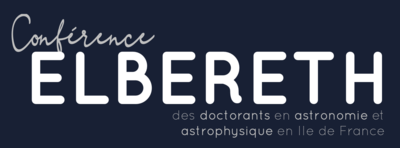Orateur
Description
Cosmic voids are the largest objects emerging in the cosmic web, covering the majority of the volume of the Universe. They are a well-established probe to gather cosmological information from the large-scale structure, as well as interesting regions to study how an underdense environment affects the behaviour of astrophysical objects. Unfortunately, identifying voids from galaxy surveys is a challenging task: observational effects such as holes in the mask or magnitude selection hinder the detection process, while galaxies are biased tracers of the underlying dark matter distribution. Furthermore, with a single realization of the Universe, the characterization of statistical errors is not straightforward.
In order to overcome these problems, we use a set of constrained simulations of the large-scale structure that are consistent with the observed galaxies, effectively representing statistical independent realization of the probability distribution of the cosmic web. We combine the voids that are detected in separate simulations, accepting only the regions that are labeled as underdense with high statistical significance. As this framework is fully Bayesian, we evaluate the probability distributions of the positions and radii of the voids. Finally, we characterize the actual shape of these regions, effectively producing a template for density environments that can be used in astrophysical applications such as galaxy evolution studies.
| Astrophysics Field | voids, large-scale structure, cosmology |
|---|

